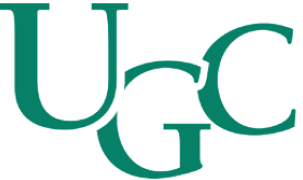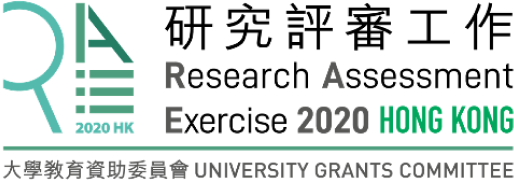Unit of Assessment:
Research categories:
?Chemistry
Optics (1)
Engineering
Spectroscopy (1)
Environment/Ecology
Environmental Sciences (1)
Impact locations:
?Asia
Hong Kong, China (4), Taiwan, China (2), Thailand (1), South Korea (1), Japan (1)
Case Study
A cultural, behavioural and regulation campaign against light pollution: from Hong Kong to the world
1. Summary of the impact
Research at HKU’s Department of Physics has underpinned a long-term cultural, behavioural, and regulation movement against light pollution, starting from Hong Kong and extending to other countries. The research underpinned the Hong Kong government’s Charter on External Lighting, through which more than 4,800 organisations pledged to turn off lighting at night. The research technique used in Hong Kong has now been applied in 11 other countries/regions, spreading the message of dark sky preservation worldwide, influencing policy decisions and securing a range of environmental and health benefits. The PI is now serving in the government’s Working Group on External Lighting – the official consultative body to consider further government restrictions on the use of external lighting in Hong Kong.
2. Underpinning research
Light pollution is a form of environmental degradation caused by inappropriate and/or excessive use of artificial outdoor lighting that affects the natural environment. Poorly designed outdoor lighting not only wastes energy, money, and valuable earth resources, but also has negative impacts on our ecological systems and possibly our health. Saving electricity by reducing improper outdoor lighting also means less air pollution. This could in turn reduce global warming caused by the power generation process.
Dr Jason Pun (joined HKU as Assistant Professor in 2001; Principal Lecturer since 2013) first studied this issue in 2003 using traditional astronomical techniques (telescope and camera). This was the first scientific research of this problem in Hong Kong. To increase the geographical and time coverage of the survey, Dr Pun obtained an Environment and Conservation Fund (ECF) grant from the HKSAR government’s Environmental Protection Department (EPD) in 2007 to initiate the project A Survey of Light Pollution in Hong Kong − the first-ever ECF grant on the topic [IIa]. It was designed as a citizen science project, with over 170 participants from different walks of life (amateur astronomers, campsite managers, and secondary school teachers, and students) contributing 2,000 individual readings of night sky conditions. At the end of this 18-month survey, the first Hong Kong light pollution map – taken over 199 distinct locations – was created [Ia].
Building on the success of this survey, another ECF grant was received in 2009 for the project Hong Kong Night Sky Brightness Monitoring Network [IIb]. Automatic night sky measuring stations were established at 18 sites around Hong Kong to continuously monitor the quality of the night sky. Over five million data entries were collected, making it then the largest long-term single database on night sky brightness ever collected in the world. Results from this two-year study clearly revealed that artificial exterior lighting is the main source of light pollution in Hong Kong, with the night sky changing sharply near the top of the hour at 11pm, 12am, and 1am, matching the timing patterns of surrounding public and commercial lighting. Moreover, the Hong Kong urban night sky was found to be 100 to 1,000 times brighter than the international dark sky standard between 8:30–11:00pm, making it one of the most light-polluted cities in the world [Ib].
3. References to the research
Peer-reviewed publications:
Ia. Pun, C. S. J., & So, C. W. 2011, “Night-sky Brightness Monitoring in Hong Kong: A city-wide light pollution assessment”, Environmental Monitoring and Assessment, 184, 2537 DOI: 10.1007/s10661-011-2136-1 (2017 Journal Impact Factor: 1.804; Google Scholar citation: 62)
Ib. Pun, C. S. J., So, C. W., Leung, W. Y., Wong, C. F. 2014, “Contributions of artificial lighting sources on light pollution in Hong Kong measured through a night sky brightness monitoring network”, Journal of Quantitative Spectroscopy and Radiative Transfer, 139, 90–108; DOI: 10.1016/j.jqsrt.2013.12.014 (2017 Journal Impact Factor: 2.600; Google Scholar citation: 48)
External grant funding to Dr Jason C. S. Pun:
IIa. Project title: A Survey of Light Pollution in Hong Kong (ECF 2007-01) Funding Scheme: Environment and Conservation Fund (ECF) of the HKSAR Government Period: 2007–2009 Amount Awarded: HKD148,000 IIb. Project title: Hong Kong Night Sky Brightness Monitoring Network (ECF 2009–10) Funding Scheme: Environment and Conservation Fund (ECF) of the HKSAR Government Period: 2010–2012 Amount Awarded: HKD499,970
4. Details of the impact
The HKU team combines rigorous scientific research with a consistent effort to a) promote public awareness of the damages caused by light pollution to the natural environment and b) to participate in the policy-development processes of the government, adopting a multifaceted approach in community engagement.
(I) Raising awareness of, and promoting good practices against, light pollution
i. Since 2005, the research from HKU’s team was covered in over 190 public media items, including CNN and the Wall Street Journal (88 since 1 October, 2013). The coverage focuses squarely on the damaging effects of abusive outdoor lighting and the policies needed to fix it, and includes four newspaper editorials published immediately after the HKU team’s press release advocating for more government intervention to reduce light pollution1[1].
ii. A bilingual website (http://nightsky.physics.hku.hk/) was set up to educate the public and to communicate the HKU team’s research on light pollution. Since 1 October, 2013, it has attracted 90,000 unique visitors and over 460,000 pageviews (107,000 visitors and 604,000 pageviews since the webpage’s launch in October 2011).
iii. An Outdoor Lighting Directory was created in 2017 to display public-contributed examples of good and poor lighting fixtures (http://nightsky.physics.hku.hk/STEM/lightdir/). Over 270 photos were submitted, showing the engagement of citizens and their desire to reflect on the quality of lighting in their neighbourhoods (almost 2000 pageviews).
iv. HKU light pollution research was featured in formal curriculum through a 2016 government-supported Education Television segment that was viewed over 77,000 times by school children in the classroom [2]. HKU research results had also been reprinted in one of Education Bureau-approved textbooks published in 2017 (3,000 copies sold). [3]
v. HKU co-organised light pollution-themed competitions and associated public education events with the Hong Kong Space Museum – the flagship museum operated by the Hong Kong government for the popularization of astronomy and space science. These events succeeded in engaging the public (over 400 competition participants, 17,000 visitors) to reflect on and explore impacts of light pollution in their communities2 [4].
“By joining this competition, we learnt that light pollution is all around us. That got us wondering why there are so many lamp posts generating severe light pollution all around Hong Kong.” ― 2019 Light pollution STEM competition winners
(II) Engaging the government and stakeholders in the policy-making process:
i. In April 2011, the Government established the Task Force on External Lighting (Task Force) to advise her on the “appropriate strategy and measures to tackle nuisance and energy wastage problems caused by external lighting”. The HKU team actively engaged with the Task Force to inform members about the impact of light pollution and its current conditions.
“The work of the HKU Team is unique, pioneering, and impactful not only for the Hong Kong community but indeed has significant implications for the improvement of city life globally. It has informed the formulation of policies and design of public education campaigns.” ― Prof. Albert Chau, (Member 2011–2013; Chairman, 2013–2015), Task Force on External Lighting, Environmental Bureau, HKSAR Government [5]
ii. Based on the recommendations laid out in the Report submitted by the Task Force in 2015, the Environmental Protection Department issued the Charter on External Lighting in 2016, the first government initiative to combat excessive lighting. Over 4,800 organisations signed the Charter and pledged to turn off external lighting during late night hours.
iii. Dr Pun is now directly participating in the process in shaping public policy by serving as a member of the Working Group on External Lighting (since August 2018), an official body set up to “review the effectiveness of the Charter and to study how to further regulate external lighting” (Chief Executive’s 2018 Policy Address). This represents the strongest commitment ever from the government to reduce the negative impacts of light pollution [6].
iv. To engage stakeholders from different disciplines against light pollution, the HKU team has delivered 17 talks since 1 October, 2013 to professional organisations in lighting, building, engineering, architecture, business, and medicine (http://nightsky.physics.hku.hk/reference-talks.php) on how light pollution can be reduced by good industry practices, establishing dialogue and seeking common ground to minimize impacts of lighting pollution.
“The training course by Dr Pun highlighted the fact that impacts of light pollution can be easily and effectively reduced through lighting engineering measures...our members not only agreed that light pollution is an issue that can be minimized with professional knowledge, but also gained a greater initiative to implement these improvements” ― Ir Dr Roger Ng, Vice-Chairman, CIE (Hong Kong) Limited [7]
(III) From HKU to the world: establishing multinational impacts
i. In 2015, HKU took the lead in launching the Globe at Night – Sky Brightness Monitoring Network, a multinational light pollution measurement project. While the stations are individually owned and operated by our partner organisations (University, Observatory, Museum, etc.), the network infrastructure, data collection framework, and analysis methodologies follow the Hong Kong study, and the project is managed by HKU. The network comprises 39 stations in 12 countries/regions. The database generated forms the scientific backbone of HKU’s efforts to contribute to dark sky conservation worldwide through educating the public and engaging with policy-makers.
ii. HKU and international partners have collaborated on outreach efforts. HKU co-planned public workshops and public talks with partner organizations in Japan (2015), Korea (2016), Taiwan (2018), and Thailand (2019) [8]. Dr Pun also served as an advisor to the Taiwan Hehuanshan area in its successful application to the International Dark-Sky Association (IDA), the leading global organization in preserving the dark sky, as a Certified IDA International Dark Sky Park in August 2019.
iii. The knowledge exchange efforts of the HKU team has received international accolades: team members were named co-recipients of the 2018 Dark Sky Defender Award by the IDA, awarded in “appreciation and recognition of their exceptional efforts to promote and advance the mission and programmes of IDA to preserve night skies by promoting quality outdoor nighttime lighting to reduce light pollution and its environmental impacts” [9].
5. Sources to corroborate the impact
[1] A full list of all media appearances can be found at http://nightsky.physics.hku.hk/reference-hong-kong-media.php (The four editorials listed in footnote #1 are attached.)
[2] Educational Television General Studies and Science programme “晚上的太陽(光污染) Sun at Night (Light Pollution)” for P1–P6 and F1–F3 students produced by the Education Bureau (EDB). https://www.hkedcity.net/etv/resource/3642760986 (over 75,000 views by August 2019)
[3] “Hong Kong Today” F1–F3 Liberal Studies published by Hong Kong Education Press 2017; ISBN 978-988-236-708-1, Page 59–60 (3,000 sold by January 2019)
[4] Letter from Mr Robert Wai Ming Leung, Curator, the Hong Kong Space Museum
[5] Letter from Prof. Albert Chau, (Member 2011–2013; Chairman 2013–2015), Task Force on External Lighting, HKSAR Government
[6] HKSAR Press Release (1 August, 2018) “Appointments to Working Group on External Lighting announced” https://www.info.gov.hk/gia/general/201808/01/P2018080100386.htm
[7] Letter from Ir Dr Roger Ng, Vice Chairman, CIE (Hong Kong) Limited
[8] Public outreach effort of the Globe at Night – Sky Brightness Monitoring Network
http://globeatnight-network.org/resources.html
[9] International Dark-Sky Association Announces 2018 Award Recipients
http://darksky.org/international-dark-sky-association-announces-2018-award-recipients/
https://www.physics.hku.hk/file/upload/9178/2018_IDA_Dark_Sky_Defender_Award.pdf
1 On 18 March 2013, HKU Press release “Hong Kong Night Sky Brightness Monitoring Network Confirms manmade lighting is the dominant cause of light pollution”; The four newspaper editorials are included in Item 1 of the sources listed in Section 5: (a) South China Morning Post 23 March 2013, Circulation/Reach 108,047; (b) Ming Pao Daily News 20 March 2013 & 21 March 2013, Circulation/Reach 130,000; (c) Headline Daily 20 March 2013, Circulation/Reach 904,390)
2 2014 May 30 TVB News 時事多面睇 “過度照明” http://news.tvb.com/programmes/closerlook/538953c26db28c7772000000; YouTube channel 2015-16 Light Pollution Video Competition (短片製作比賽 2015-16 港大) http://goo.gl/bb0bfF (2233 views)

